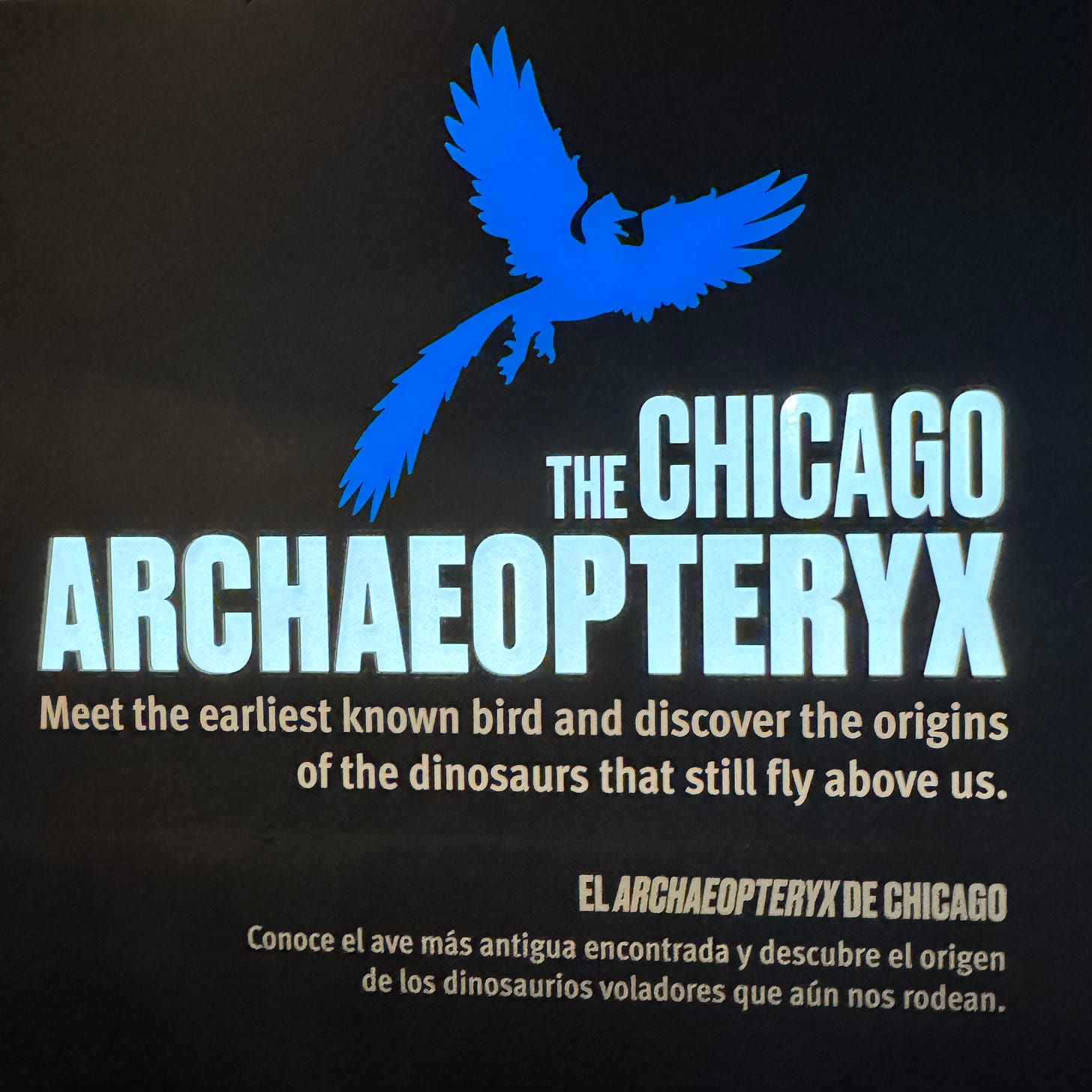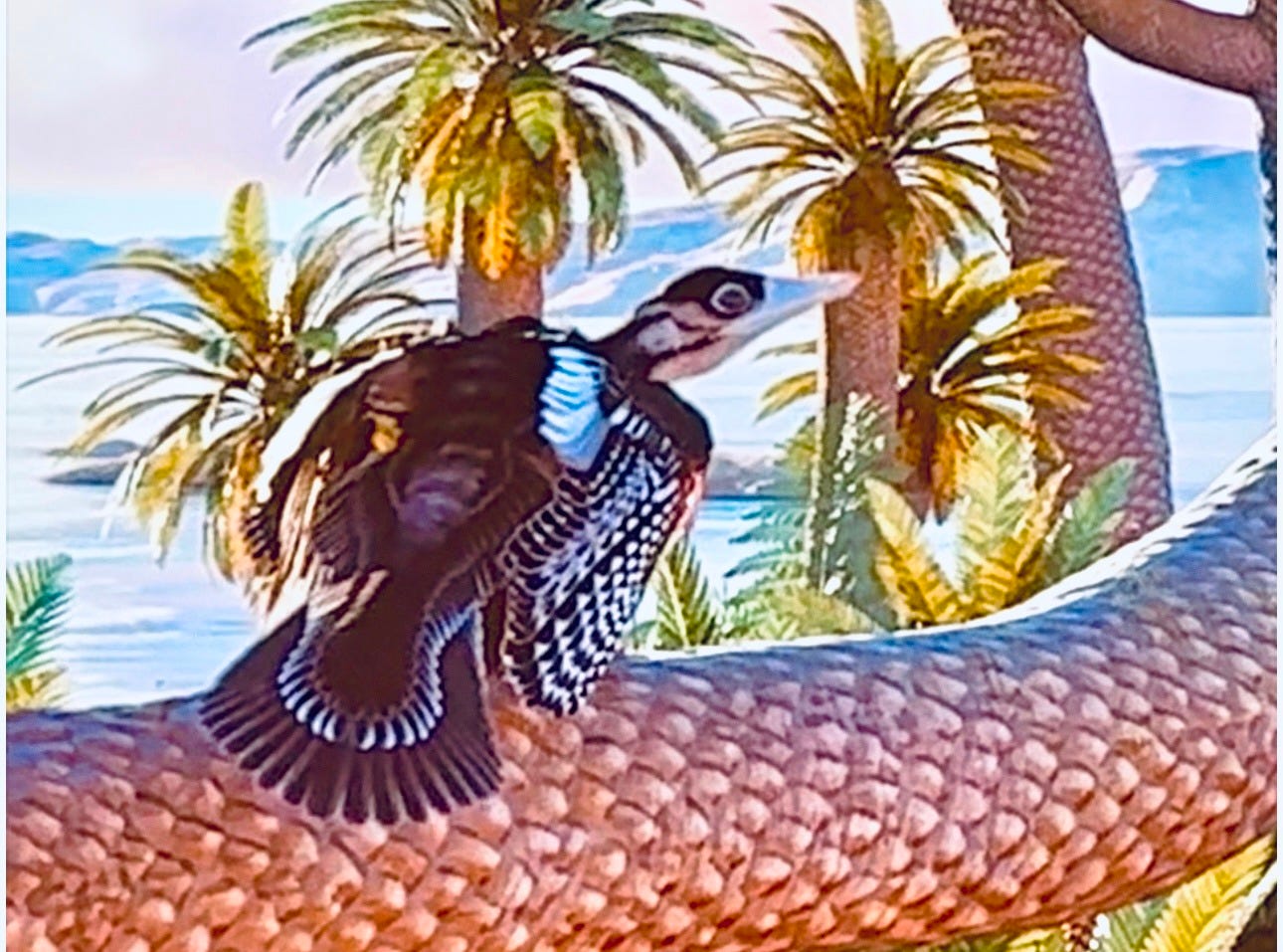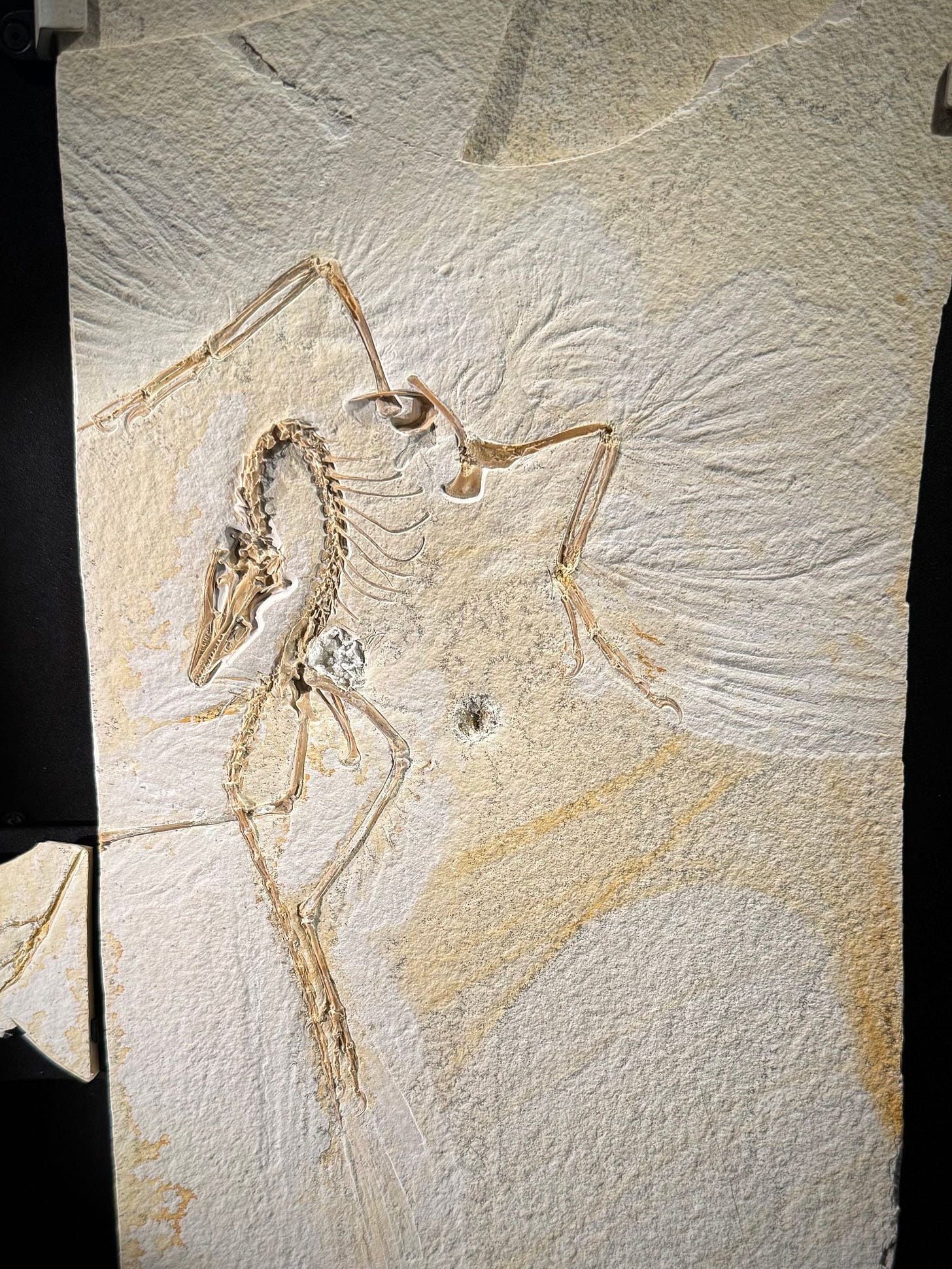A recent trip brought me to Chicago and, bird nerd that I am, one of my top priorities was visiting the Achaeopteryx on exhibit at the Field Museum. Discovered in Bavaria in 1861, shortly after Darwin proposed his theory of evolution, the first fossil Archaeopteryx was the type of “missing link” that Darwin predicted. This creature sporting feathered wings, a long and boney feathered tail and a toothed beak, was something that was neither entirely a dinosaur nor entirely a bird, but rather a bridge between them.
Of course I had seen many replicas and images of Archaeopteryx, but never a real, once-living specimen. Unexpectedly strong emotions rose as I contemplated what this fossil represents. Peering at the fascinating structure of the ancient skeleton, preserved in limestone for over 150 million years, I was struck that this fossil wasn’t only a cool, well-preserved ancient creature. It was the story of evolution. Embedded in the rock is the remains of a creature both strange and familiar that helped us learn about the dawn of avian existence. It is the discovery that revolutionized our understanding of bird evolution and showed us that birds are, indeed, modern day dinosaurs. Talk about profound! (Full disclosure: I may have been the only person crying or taking fossil selfies at the exhibit that day.)

Feathers in Stone
Archaeopteryx’s toothy skull betrays its dinosaur heritage, yet its delicate wings, feathered and long, hint that this creature was bound for the sky.
Archaeopteryx wasn't a true bird, not quite, but it was the first to suggest that flight was possible. I imagine it perching on a branch, looking around, wings twitching with an instinct that would take eons to fully realize. In those fossilized feathers, I see the beginnings of the intricate displays, migrations, and dawn songs that have long fueled my passion for birds. When I watch sparrows hopping through my garden or see a hawk gliding overhead, I am reminded of that ancient ancestor. Every bird today carries a piece of its legacy. This fossil is a promise from the distant past that the sky would one day be filled with wings and life would soar.
Where Can I See Archaeopteryx?
Only thirteen Archaeopteryx specimens have been unearthed, each with varying degrees of completeness. Chicago’s Field Museum acquired its specimen in 2022, making it the only Archaeopteryx fossil on public view in a major North American city. (There is another on display at the Wyoming Dinosaur Center in Thermopolis, Wyoming.) The Chicago specimen is celebrated for being one of the most complete examples of the species and they have done a wonderful job with interpretive graphics, including a holographic recreation of how the Archaeopteryx in this fossil may have died.
The other fossils are housed in museums and in private collections. In Europe, most of the specimens are housed in German institutions, given that all known Archaeopteryx fossils were discovered in Germany’s Solnhofen limestone deposits. The most famous and well-preserved specimens are on display at the Natural History Museum in Berlin, the Bavarian State Collection for Paleontology and Geology in Munich, and the Natural History Museum in London.
I suspect the wonder I felt seeing the Chicago Archaeopteryx may have set me on a quest to visit the others. I’d be honored to cry in every museum that offers a chance to experience the most iconic transitional species in the record of animal evolution!








Thank you for this wonderful post! You'll love the Berlin-specimen. I hope you'll be able to visit it!
Such beautiful fossils. I've always been fascinated by archaeopteryx.